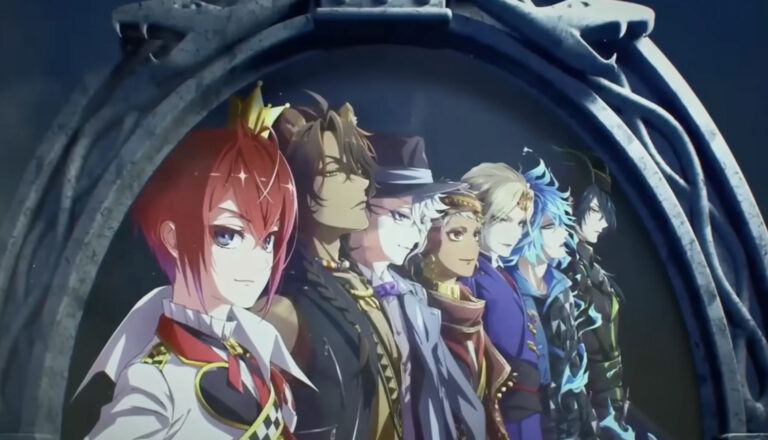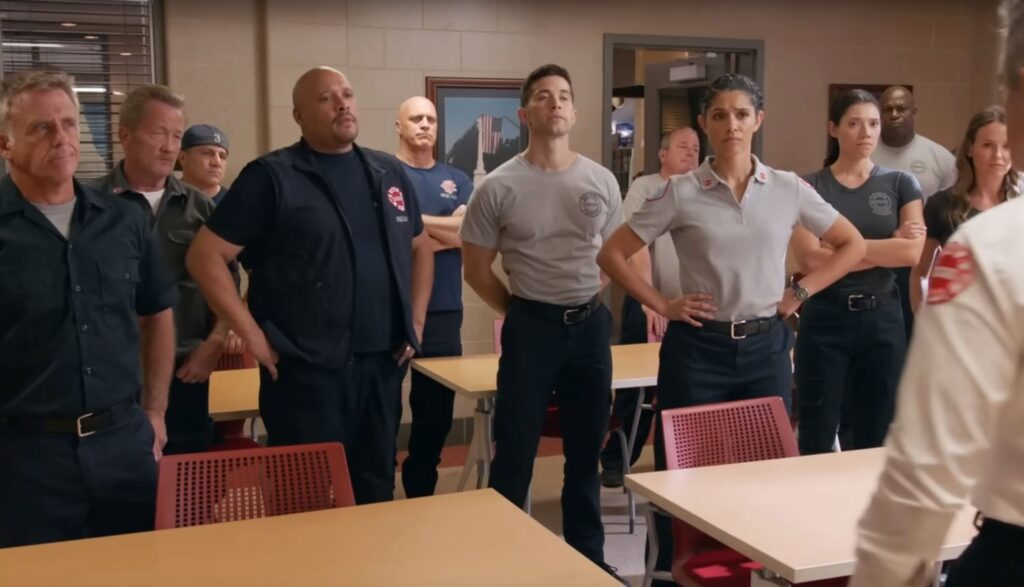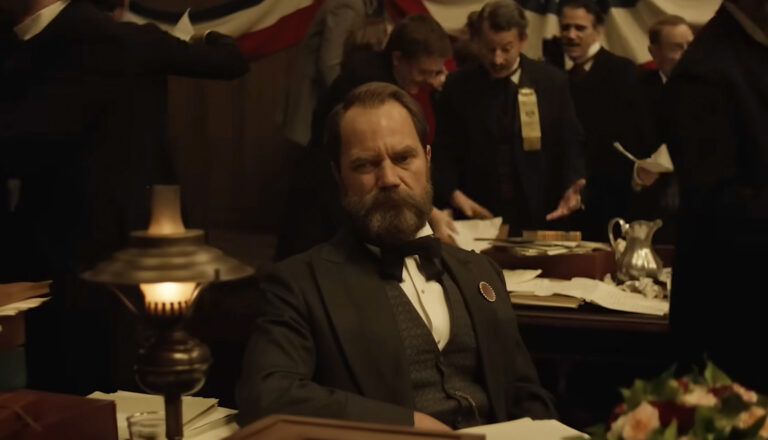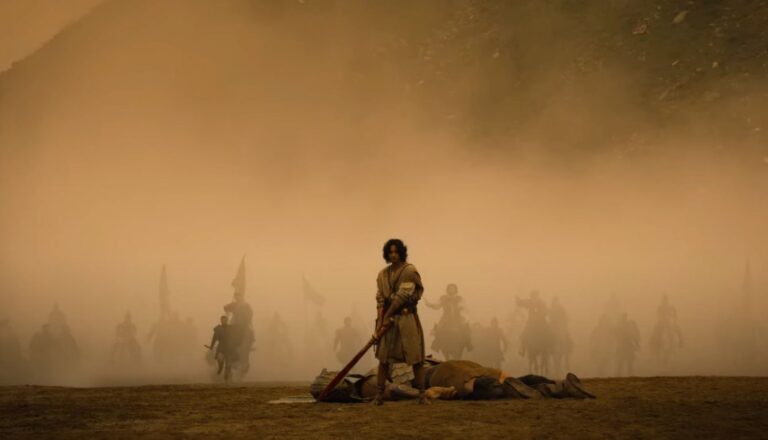
Disney Twisted-Wonderland: The Animation
In Twisted-Wonderland on Disney+, Yu finds himself at a school of magic, governed by Disney villain-inspired houses. And he desperately wants to find his way back home.

When I was a little kid, my dad was a fireman. And I wanted to be one too.
I’d run around the house in my plastic firefighter’s hat and ride on pretend fire trucks (the piano bench) while singing fireman-related songs. I knew all the songs, but I didn’t quite know what it meant to be a fireman, other than you slid down poles and rode cool trucks, oh, and that it had something to do with fires. I just knew that if my dad did it, it had to be awesome.
I doubt my father’s career was much like what we see in Chicago Fire.
This is not to impugn NBC’s series for its lack of realism, mind you. Dad was fighting fires in rural New Mexico, which probably wouldn’t resemble the urban flare-ups and rescue missions that this program showcases.
Nor do I envision my dad’s fire department as being quite so … soapy. Perhaps no fire station in the country can match Chicago’s Firehouse 51 when it comes to flat-out melodrama. Most firefighters, I’d imagine, probably get drama aplenty outside the station’s doors, and don’t feel the need to foster more of it internally.
Not so here.
Relationships spark, fizzle and occasionally explode (including LGBT relationships). More love smolders than hot coals at a firewalker convention. Rarely do things get particularly graphic (though we occasionally see some sensuality and skin), but there’s a whole lot of sudsy struggling going on here—so much so that viewers might struggle to keep all the plots and subplots and sub-subplots straight.
They’ll certainly struggle to sort out the characters’ morals. So it can actually be a relief when the firefighters dive into the streets of Chicago and fight some actual fires, rescue some injured people and deliver the occasional baby. And, in all fairness, they do so pretty regularly.
In spite of all the distractions that may burble and bubble over at Firehouse 51, these men and women know their jobs, and they do them well. Chicago Fire doggedly preserves the sense that they are heroes of the highest order—concerned with the city’s well-being and the citizens therein.
But we don’t really need to watch a television show to remind us of that, do we? Any kid in a red, plastic firefighter’s hat could tell you what a hero looks like.
(Editor’s Note: Plugged In is rarely able to watch every episode of a given series for review. As such, there’s always a chance that you might see a problem that we didn’t. If you notice content that you feel should be included in our review, send us an email at letters@pluggedin.com, or contact us via Facebook or Instagram, and be sure to let us know the episode number, title and season so that we can check it out.)
Paramedics try to get to the bottom of separate patients with suspiciously similar injuries. Veteran firefighter Stella Kidd tries to wrangle a new rookie, Sal Vasquez, who has a mysterious past. And other firefighters at Firehouse 51 deal with personal drama at home.
Firefighters respond to a fire in a junkyard. One firefighter aids a man struggling due to smoke inhalation while another picks up a flaming gas tank and carries it to where the hoses can douse it before it explodes. The firefighters succeed in putting out the fire.
Paramedics bandage a woman who appears to have been stabbed in the stomach. Though she’s lost some blood, they’re able to get her the help she needs. Later they tend to a man with a cut arm. He also claims it was an accident, but his wound is similar to the woman’s (both were exposed to capsaicin, a chemical in peppers).
Police say they can’t investigate the similarities without more evidence, so the paramedics do their own digging. Upon further questioning, the first stab victim admits she and her brother, who has severe mental health troubles, got into an argument that grew physical. The paramedics convince the woman to let them put her in touch with doctors who can help her and her brother.
Stella tries to discipline Sal for putting his life at risk during a fire. Both firefighters are stubborn, but they seem to reconcile their differences. Stella and her husband foster a 14-year-old boy while his mom is in the hospital. (We hear that she was hit by a car and suffered head trauma.)
Sal verbally threatens a man for mocking him. The guy tries to apologize later, but Sal refuses to listen. We learn Sal’s dad is in prison.
A firefighter tries to increase profits at his bar through “shrinkflation,” intentionally selling smaller glasses of beer for the same price. He winds up buying a round of drinks for his customers when they complain. He lies to his business partner about the incident, but they reconcile. Some women drink wine after work.
We hear a man’s boyfriend, who is a cop, was shot in the line of duty. He flies to New York to be with him. We see an unmarried couple sleeping in bed together, sheets covering their private areas. A married couple kisses.
A man seemingly prays before a meal. Someone wears a cross necklace. We hear the term “speak of the devil.”
God’s name is abused, paired with “d–n.” We hear that latter term elsewhere, along with “h—” and “ballsy.”
The men and women at Firehouse 51 dash out to douse a fire at a homeless encampment; an exploding propane tank nearly takes down Cruz, who’s expecting his first child with his wife. He’s leery of telling her about his close call, though, not wanting to worry her. But the rest of the firehouse has a bigger problem on its hands: The fire may have been intentionally set—and with an eye toward murder.
A man suffers some bad, bloody burns on his chest. He’s nearly unconscious when he’s taken away from the fire. In the hospital later, he’s clearly in pain. Cruz’s own injury amounts to just a bloody wound on his cheek, but a fellow firefighter says the shrapnel nearly “Ned Starked” him (a reference to a famous decapitation scene in Game of Thrones). Later, someone describes the potential lethality more clinically, telling Cruz that the shrapnel was just an inch away from his carotid artery. A man’s hand and arm get crushed by a tombstone. (The guy’s broken forearm is graphically obvious beneath his skin.) Blood is seen on the ground below. Someone dies offscreen. We see fires rage and people blown back by explosions.
After paramedic Sylvie Brett breaks things off with Capt. Matthew Casey, she meets a new potential beau. Another couple smokes cigars outside the firehouse as the ex of one walks on by, and one plots to appear more dangerous to keep his lover’s interest. A homeless girl insinuates that homeless shelters are dangerous places for women.
People drink beer and mixed drinks. Two characters admit to feeling nauseous from the cigars they’re smoking. We hear a reference to an overdose. A guy admits to losing $300 in a poker tournament. Someone tells his wife that she was pretty rude to a plumber, and that her “profanity was off the charts.” As for profanity that viewers hear, that’s sequestered to just a smattering of swears: one use of “a–,” one of “d–n” and three of “h—.”
It’s Thanksgiving at Firehouse 51, but Chicago won’t let the guys eat. Instead they’re dodging bullets in a shootout and saving a couple of downed gang members. They rescue a family from a deep-fried turkey gone crazy—but not before the garage fire takes out a snowmobile and family members get into a fistfight. They patch up people involved in a multicar pileup, including a guy gushing blood from his neck.
That’s outside. Inside, we see Casey and Hallie in bed together, obviously having sex. Severide desperately tries to evade a drug test; Shay eventually gives him her urine (in a cup) to give to the inspector. We see Severide pop a powerful narcotic. We hear a reference to crack. People drink shots of whiskey.
A teen calls Brody a “b‑‑ch.” We hear other curses, too, including “h‑‑‑” (four or five times), “d‑‑n” (twice), “p‑‑‑” (once), “a‑‑” (once), “b‑‑ch” (another time), a use of “frickin'” and an aborted s-word (along with a reference to “BS”). God’s name is misused.

Paul Asay has been part of the Plugged In staff since 2007, watching and reviewing roughly 15 quintillion movies and television shows. He’s written for a number of other publications, too, including Time, The Washington Post and Christianity Today. The author of several books, Paul loves to find spirituality in unexpected places, including popular entertainment, and he loves all things superhero. His vices include James Bond films, Mountain Dew and terrible B-grade movies. He’s married, has two children and a neurotic dog, runs marathons on occasion and hopes to someday own his own tuxedo. Feel free to follow him on Twitter @AsayPaul.

Emily studied film and writing when she was in college. And when she isn’t being way too competitive while playing board games, she enjoys food, sleep, and geeking out with her husband indulging in their “nerdoms,” which is the collective fan cultures of everything they love, such as Star Wars, Star Trek, Stargate and Lord of the Rings.

In Twisted-Wonderland on Disney+, Yu finds himself at a school of magic, governed by Disney villain-inspired houses. And he desperately wants to find his way back home.

Netflix’s miniseries ‘Death by Lightning’ shines a spotlight on two fascinating historical figures. But it betrays the period with unnecessary problems.

House of David bringing David’s dramatic story to life, recounting the rise of his house and the downfall of King Saul’s.

What happens when ‘Star Wars’ meets anime-style plotlines and art styles? ‘Star Wars: Visions’ is the answer to that question.